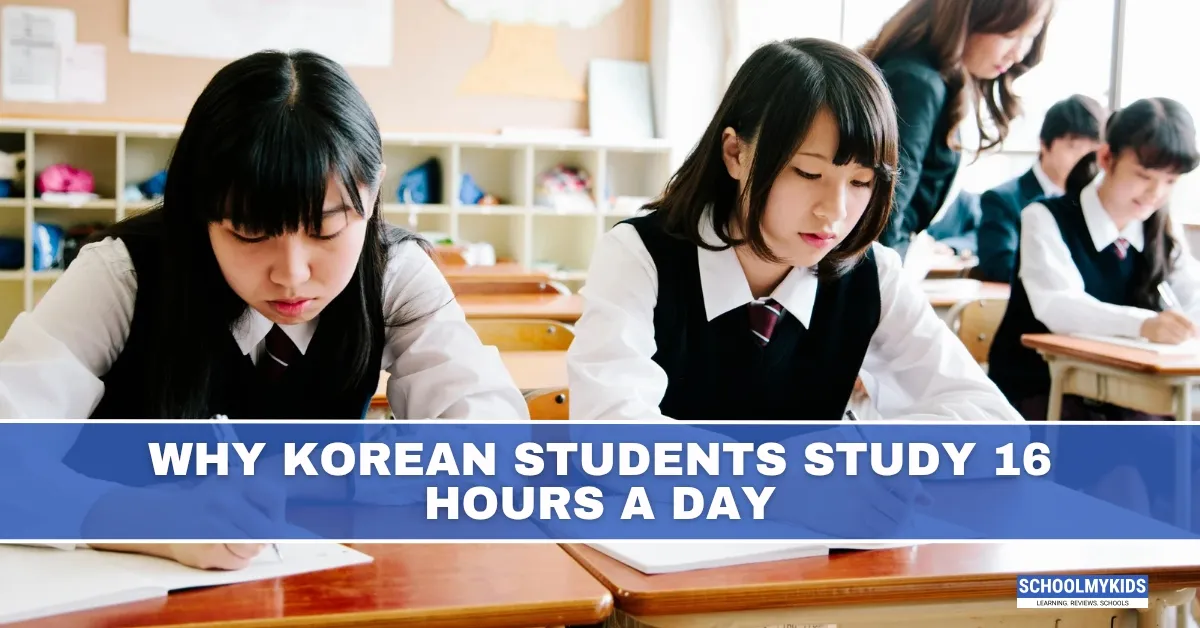South Korea is known worldwide for its impressive educational achievements. Korean students consistently rank among the top in global assessments like PISA (Programme for International Student Assessment). However, this success comes at a cost—a culture of extreme academic pressure where students often study up to 16 hours a day. While this dedication reflects the nation’s commitment to education, it also raises concerns about student well-being, mental health, and life balance.
1. Education as a Path to Success
In Korean society, education is viewed as the most important route to success. A good education leads to a prestigious university, which in turn opens doors to high-paying jobs, social status, and family pride. This deep-rooted belief drives both students and parents to pursue excellence at any cost.
From an early age, children are taught that their future depends on their academic performance. This mindset has created a hyper-competitive school environment where every exam and grade matters.
2. The Role of the “Suneung” Exam
At the heart of Korea’s academic pressure lies the College Scholastic Ability Test (CSAT), known locally as “Suneung”. This national university entrance exam is considered one of the toughest in the world. Held once a year, it determines which universities students can attend.
Admission to one of the top universities—like Seoul National University, Korea University, or Yonsei University—can shape the rest of a student's life. Due to the high stakes of this exam, students spend years preparing for it, often studying 14–16 hours a day in the final years of high school.
On the day of the CSAT, even planes are grounded during the English listening section to ensure silence. Public offices open late, and the entire country seems to pause—highlighting the national significance of the test.
3. Hagwons: The After-School Education System
A major reason Korean students study so long is the prevalence of hagwons, or private after-school academies. After their regular school hours, many students attend hagwons until 10 or even midnight, receiving additional instruction in math, science, English, or test preparation.
These hagwons are not optional in the eyes of most families—they are considered essential for success. Parents invest a significant portion of their income in these institutions, sometimes at the expense of their own financial well-being.
In fact, South Korea spends one of the highest percentages of its GDP on private education in the world.
4. A Culture of Parental Pressure
In Korea, education is a family affair. Parents, especially mothers (called “edu-moms”), are deeply involved in their children’s academic lives. They choose schools, tutors, and hagwons and closely monitor progress.
This parental involvement often translates into intense pressure on students to perform well, not just for themselves, but for their families. Failing to meet expectations can cause students to feel guilt, shame, or even depression.
5. Lack of Sleep and Mental Health Concerns
The average South Korean high school student gets less than 6 hours of sleep per night. Long school hours, evening academies, homework, and stress leave little time for rest. Sleep deprivation is a widespread issue.
Unsurprisingly, this relentless schedule has taken a toll. South Korea has one of the highest suicide rates among young people in the developed world. Mental health issues, stress, and burnout are common among students.
Though efforts have been made to reduce school hours and limit late-night study at hagwons, the competitive culture remains deeply entrenched.
6. Government Reforms and Challenges
Recognizing the harms of over-studying and stress, the South Korean government has tried to implement reforms. These include:
- Restricting hagwon operating hours past 10 p.m.
- Promoting “free semester” programs with less focus on exams.
- Encouraging career education and emotional well-being classes.
However, these reforms often clash with societal expectations and university admission realities, making them difficult to enforce in practice.
7. Technology and Online Learning
With the rise of online education platforms and mobile apps, students now have access to educational content 24/7. While this allows flexibility, it also means that study hours can continue late into the night, blurring the lines between study time and personal time.
Digital competition, rankings, and leaderboards on study apps add yet another layer of academic pressure.
8. The Other Side: Discipline and Achievement
While the system is demanding, it has also produced results. South Korea has:
- One of the highest literacy and graduation rates in the world.
- A strong workforce with advanced STEM skills.
- Global recognition for its educational standards.
The discipline, work ethic, and dedication of Korean students are admired globally. Many go on to excel at top universities and in competitive global industries.
Conclusion
South Korea’s education system is a double-edged sword. On one hand, it has created a highly educated, motivated, and capable generation. On the other hand, it has built a culture of excessive pressure, where students sacrifice sleep, well-being, and leisure for academic achievement.
The 16-hour study day is not just a schedule—it’s a symbol of Korea’s fierce determination to succeed. But as conversations grow around mental health and work-life balance, the country faces the challenge of redefining what true educational success looks like.








Be the first one to comment on this story.